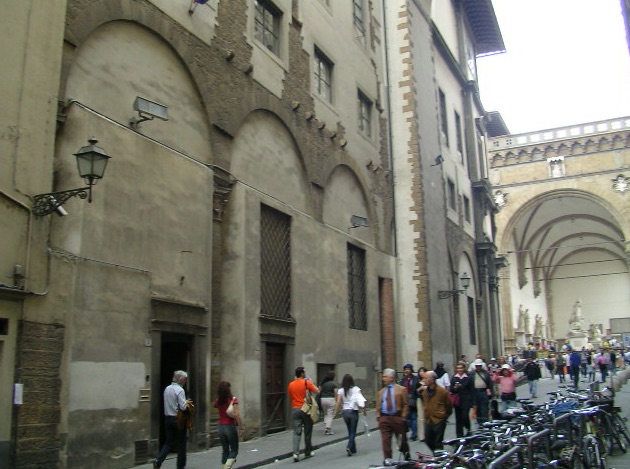- Read offline
- Access all content
- Use the in-app Map to find sites, and add custom locations (your hotel...)
- Build a list of your own favourites
- Search the contents with full-text search functionality
- ... and more!
San Pier Scheraggio
Swallowed by the Uffizi

This large and once important Romanesque church was consecrated in 1068 (its curious name comes from schiaraggio, the drain that ran beside the city walls), and used to host the communal council where both Dante and Boccaccio once spoke. Cimabue frescoed one of the naves, with a tender scene of the Madonnna, where she seemed to cradle and sing a lullaby (ninna) which gave its name to the street.
It wasn't enough to spare the church when the Palazzo Vecchio needed more room in 1298, and Cimabue's nave was the first section to be sacrificed. In 1560, a second nave was demolished for the Uffizi, leaving only the arches of the nave along Via della Ninna.
In spite of all its amputations, San Pier Scheraggio was still used for services until 1782, when it became an archive for the court. In 1971 it underwent a major restoration, and today serves a conference and event centre. If you attend one, you may see its three 1st century AD altars, fragments of the church's 13th-century frescoes, detached frescoes from the series of Famous Men by Andrea del Castagno and modern pieces by Alberto Burri, Renato Guttuso, Marino Marini and Venturino Venturi.

Via della Ninna
Hours
Image by Sailko, GNU Creative Commons License

